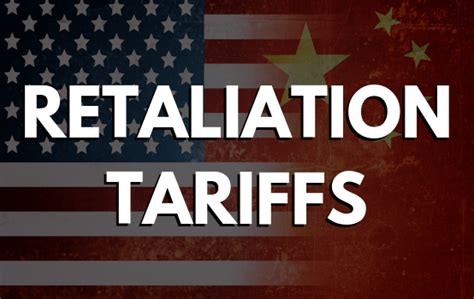
Retail giants like Home Depot and Walmart are feeling the pressure as tariffs, persistent inflation, and increasingly cautious consumer spending habits converge to impact their bottom lines, signaling potential headwinds for the broader retail sector and the overall economy.
Major retailers are navigating a complex landscape of economic challenges, with tariffs, inflation, and wary consumers creating a difficult environment for growth and profitability. Home Depot and Walmart, bellwethers for the retail industry, have both signaled the impact of these pressures in their recent financial reports and forward-looking statements.
Persistent inflation remains a primary concern. While the rate of inflation has cooled from its peak in 2022, it remains stubbornly above the Federal Reserve’s 2% target. This sustained inflationary environment continues to erode consumers’ purchasing power, forcing them to make difficult choices about where to spend their money. As consumers prioritize essential goods and services, discretionary spending on items typically sold by retailers like Home Depot and Walmart is taking a hit.
Tariffs, particularly those imposed on goods imported from China, continue to add to the cost of goods sold. These tariffs, implemented during the previous administration, have not been fully rolled back, leaving retailers to absorb the increased costs or pass them on to consumers. The latter strategy risks further dampening consumer demand, while the former eats into profit margins.
Consumers are also becoming increasingly leery about the economic outlook. High inflation, rising interest rates, and concerns about a potential recession are contributing to a more cautious spending approach. This shift in consumer behavior is reflected in weaker sales growth and increased price sensitivity across various retail categories.
Home Depot, a leading home improvement retailer, has acknowledged the impact of these macroeconomic factors on its business. While the demand for home improvement projects surged during the pandemic, as people spent more time at home and invested in their living spaces, this demand has since normalized. Furthermore, rising mortgage rates have cooled the housing market, reducing demand for home renovations and improvements.
“We’re seeing a normalization after a period of unprecedented growth,” said a representative from Home Depot, emphasizing the changing dynamics in the home improvement sector. The company is focusing on initiatives to improve the customer experience and enhance its supply chain to mitigate the impact of these challenges.
Walmart, the world’s largest retailer, is also feeling the pinch. The company caters to a wide range of consumers, including a significant portion of budget-conscious shoppers. As inflation continues to strain household budgets, Walmart’s customers are becoming even more price-sensitive, leading to increased competition and pressure on profit margins.
“We’re managing through a challenging environment,” said a Walmart executive, highlighting the need to balance competitive pricing with maintaining profitability. The company is focusing on cost-cutting measures, supply chain efficiencies, and private-label brands to offer consumers value while protecting its bottom line.
Beyond Home Depot and Walmart, other major retailers are also reporting similar challenges. Target, for example, has cited the impact of inflation and supply chain disruptions on its financial performance. Smaller retailers are also struggling to compete in this environment, facing increased costs and reduced consumer demand.
The retail sector’s struggles have broader implications for the overall economy. Consumer spending accounts for a significant portion of GDP growth, and a slowdown in retail sales can signal a weakening economy. The challenges facing retailers also highlight the ongoing impact of trade policies and the complexities of managing inflation in a globalized economy.
The Federal Reserve’s efforts to combat inflation by raising interest rates are further complicating the situation for retailers. Higher interest rates increase borrowing costs for businesses and consumers, potentially dampening investment and spending. While the Fed’s actions are aimed at bringing inflation under control, they also carry the risk of triggering a recession.
Economists are closely watching the retail sector for signs of further weakness. Some analysts believe that the current challenges are temporary and that consumer spending will eventually rebound. Others are more pessimistic, warning of a prolonged period of slow growth or even a recession.
The outlook for the retail sector remains uncertain. The path forward will depend on a number of factors, including the trajectory of inflation, the Federal Reserve’s monetary policy decisions, and the evolution of consumer spending habits. Retailers will need to adapt to the changing environment by focusing on cost management, supply chain efficiency, and customer experience to navigate these challenges successfully.
In conclusion, the confluence of tariffs, persistent inflation, and cautious consumer spending is creating a challenging environment for retail giants like Home Depot and Walmart. These pressures are not only impacting the retail sector but also have broader implications for the overall economy. The ability of retailers to adapt and navigate these challenges will be crucial for their long-term success and for the health of the economy as a whole. The coming months will be critical in determining the extent and duration of these economic headwinds.
Detailed Expansion and Context:
The challenges facing Home Depot and Walmart are not isolated incidents but rather reflect a broader trend impacting the entire retail landscape. Understanding the nuances of each contributing factor – tariffs, inflation, and consumer sentiment – provides a clearer picture of the complexities retailers are grappling with.
Tariffs: A Lingering Headwind
The imposition of tariffs on imported goods, particularly from China, was initially intended to protect domestic industries and encourage companies to bring manufacturing back to the United States. However, the reality has been more complex. Many retailers rely heavily on imported goods to offer competitive prices to consumers. When tariffs are imposed, these retailers face a choice: absorb the increased costs and accept lower profit margins, or pass the costs on to consumers in the form of higher prices.
The decision is not always straightforward. Absorbing the costs can protect market share and maintain customer loyalty, but it can also significantly impact profitability, especially for retailers operating on thin margins. Passing the costs on to consumers risks alienating price-sensitive shoppers and driving them to competitors who may be able to offer lower prices.
Furthermore, the impact of tariffs extends beyond direct costs. They can also create uncertainty and disrupt supply chains. Retailers need to adjust their sourcing strategies, negotiate with suppliers, and potentially find alternative sources of goods. These adjustments can be time-consuming and costly, adding further pressure to their bottom lines.
The previous administration’s trade policies left a lasting legacy. While some adjustments have been made, the core tariff structure remains largely in place, continuing to pose a challenge for retailers. The ongoing trade tensions between the United States and China add another layer of uncertainty, as the possibility of further tariff increases looms.
Inflation: A Persistent Threat
Inflation has been a major economic story in recent years. After remaining relatively low for more than a decade, inflation surged in 2022, driven by a combination of factors including supply chain disruptions, increased demand as the economy recovered from the pandemic, and government stimulus measures. While inflation has cooled somewhat since its peak, it remains above the Federal Reserve’s target, and its persistence is weighing on consumers and businesses alike.
For retailers, inflation presents a multifaceted challenge. On the cost side, they face higher prices for goods, transportation, and labor. On the demand side, they face reduced consumer spending as households grapple with higher living costs.
The impact of inflation varies across different retail categories. Essential goods, such as food and household supplies, tend to be more resilient to inflationary pressures, as consumers need to purchase these items regardless of price. Discretionary goods, such as apparel, electronics, and home furnishings, are more vulnerable, as consumers can postpone or forgo these purchases if their budgets are stretched.
Walmart, with its focus on providing affordable goods to a wide range of consumers, is particularly sensitive to inflation. As inflation erodes household budgets, Walmart’s customers become even more price-conscious, seeking out the best deals and switching to cheaper alternatives. This puts pressure on Walmart to keep prices low, even as its own costs are rising.
Home Depot, while benefiting from the surge in home improvement spending during the pandemic, is also facing inflationary pressures. Rising prices for building materials, appliances, and tools are impacting the cost of home improvement projects, potentially deterring some consumers from undertaking larger renovations.
Consumer Sentiment: A Key Indicator
Consumer sentiment is a key indicator of the health of the retail sector and the overall economy. When consumers are confident about the economic outlook, they are more likely to spend money, driving sales and fueling growth. When consumers are worried about the future, they tend to cut back on spending, leading to a slowdown in economic activity.
Consumer sentiment is influenced by a variety of factors, including inflation, unemployment, interest rates, and political events. High inflation and rising interest rates tend to dampen consumer sentiment, as they erode purchasing power and increase borrowing costs. Concerns about a potential recession can also weigh on consumer confidence, leading to a more cautious spending approach.
The University of Michigan’s Consumer Sentiment Index is a widely followed gauge of consumer confidence. The index has been volatile in recent years, reflecting the uncertainty surrounding the economic outlook. While the index has rebounded somewhat from its lows in 2022, it remains below pre-pandemic levels, suggesting that consumers are still cautious about the future.
Retailers closely monitor consumer sentiment to gauge the strength of demand and adjust their strategies accordingly. If consumer sentiment is weak, retailers may need to offer discounts and promotions to entice shoppers. They may also need to reduce inventory levels to avoid being stuck with unsold goods.
Adaptation and Strategies for Retailers
Faced with these challenges, retailers are adopting a variety of strategies to navigate the current environment. These strategies include:
- Cost Management: Retailers are focusing on cutting costs across their operations, from streamlining supply chains to reducing overhead expenses. This may involve renegotiating contracts with suppliers, investing in automation, and consolidating operations.
- Supply Chain Efficiency: Improving supply chain efficiency is crucial for reducing costs and ensuring that products are available when and where customers want them. Retailers are investing in technology to track inventory, optimize logistics, and improve forecasting accuracy.
- Private-Label Brands: Developing and promoting private-label brands is a way for retailers to offer consumers value without sacrificing profit margins. Private-label brands typically have lower costs than national brands, allowing retailers to offer them at competitive prices while maintaining profitability.
- Customer Experience: Providing a positive customer experience is essential for attracting and retaining shoppers. This may involve investing in better customer service, offering personalized recommendations, and creating a more engaging shopping environment.
- E-commerce: E-commerce continues to be a crucial growth driver for retailers. Retailers are investing in their online platforms, offering a wider selection of products, and improving the online shopping experience.
- Strategic Pricing: Retailers are carefully managing their pricing strategies to balance competitiveness with profitability. This may involve offering targeted discounts and promotions, adjusting prices based on market conditions, and emphasizing value-added services.
- Inventory Management: Retailers are closely monitoring inventory levels to avoid being stuck with unsold goods. This may involve reducing orders, clearing out excess inventory, and using data analytics to forecast demand more accurately.
The success of these strategies will depend on a number of factors, including the specific characteristics of each retailer, the competitive landscape, and the overall economic environment. Retailers that are able to adapt and innovate will be best positioned to navigate the current challenges and emerge stronger in the long run.
Broader Economic Implications
The challenges facing the retail sector have broader implications for the overall economy. Consumer spending accounts for a significant portion of GDP growth, and a slowdown in retail sales can signal a weakening economy. The struggles of retailers can also lead to job losses, reduced investment, and lower tax revenues.
The Federal Reserve’s efforts to combat inflation are further complicating the situation. Higher interest rates increase borrowing costs for businesses and consumers, potentially dampening investment and spending. While the Fed’s actions are aimed at bringing inflation under control, they also carry the risk of triggering a recession.
The interconnectedness of the global economy means that events in one part of the world can have ripple effects elsewhere. The ongoing war in Ukraine, supply chain disruptions, and trade tensions are all contributing to economic uncertainty and impacting the retail sector.
The outlook for the retail sector and the overall economy remains uncertain. The path forward will depend on a number of factors, including the trajectory of inflation, the Federal Reserve’s monetary policy decisions, and the evolution of consumer spending habits. Policymakers and business leaders will need to work together to address these challenges and ensure a sustainable economic recovery.
Future Trends and Predictions
Looking ahead, several trends are likely to shape the future of the retail sector. These trends include:
- The Continued Rise of E-commerce: E-commerce will continue to grow, driven by convenience, selection, and personalization. Retailers will need to invest in their online platforms and develop seamless omnichannel experiences to compete.
- The Importance of Sustainability: Consumers are increasingly concerned about sustainability and are demanding more environmentally friendly products and practices. Retailers will need to embrace sustainability to attract and retain customers.
- The Use of Artificial Intelligence: Artificial intelligence (AI) is transforming the retail sector in a variety of ways, from improving inventory management to personalizing customer experiences. Retailers will need to leverage AI to stay ahead of the curve.
- The Growth of Experiential Retail: Consumers are increasingly seeking out experiences, not just products. Retailers will need to create engaging and memorable shopping environments to attract and retain customers.
- The Increasing Importance of Data: Data is becoming increasingly valuable in the retail sector. Retailers will need to collect, analyze, and use data to understand customer behavior, optimize operations, and personalize marketing efforts.
These trends suggest that the retail sector will continue to evolve and adapt in the years to come. Retailers that are able to embrace these changes and meet the evolving needs of consumers will be best positioned for success.
In conclusion, the confluence of tariffs, persistent inflation, and cautious consumer spending is creating a challenging environment for retail giants like Home Depot and Walmart. These pressures are not only impacting the retail sector but also have broader implications for the overall economy. The ability of retailers to adapt and navigate these challenges will be crucial for their long-term success and for the health of the economy as a whole. The coming months will be critical in determining the extent and duration of these economic headwinds. The sector is facing a period of significant transition, requiring agility, strategic foresight, and a deep understanding of the evolving consumer landscape. Frequently Asked Questions (FAQ)
1. How are tariffs impacting retail prices for consumers?
Tariffs, especially those imposed on goods imported from countries like China, increase the cost of goods sold for retailers. They then face a decision: absorb the increased costs, which cuts into profit margins, or pass them on to consumers through higher prices. When retailers choose the latter, consumers end up paying more for goods they purchase, potentially reducing their spending on non-essential items and altering their buying habits. The extent of the price increase depends on the product, the tariff rate, and the retailer’s pricing strategy.
2. What is driving the current inflationary pressures affecting retailers?
The current inflationary pressures are driven by several factors. Supply chain disruptions, which began during the pandemic, are still contributing to higher costs for raw materials and transportation. Increased demand as economies recovered from the pandemic also played a role, as did government stimulus measures that put more money into consumers’ pockets. Labor shortages and rising wages have added to the cost of doing business for retailers, who must then pass those costs on to consumers or absorb them, affecting their profitability.
3. How does consumer sentiment influence the performance of retail giants like Walmart and Home Depot?
Consumer sentiment is a crucial indicator of retail performance. When consumers are confident about the economy, they are more willing to spend money on both essential and discretionary items, which benefits retailers. However, when consumer sentiment is low due to factors such as high inflation, rising interest rates, or concerns about a recession, consumers tend to cut back on spending, particularly on non-essential items. This leads to lower sales and increased pressure on retailers to offer discounts and promotions, impacting their bottom lines. Walmart, catering to price-sensitive consumers, and Home Depot, whose sales depend on home improvement spending, are particularly vulnerable to shifts in consumer sentiment.
4. What strategies are retailers employing to mitigate the impact of tariffs and inflation?
Retailers are employing various strategies to mitigate the impact of tariffs and inflation. These include:
- Cost Management: Streamlining operations, renegotiating contracts with suppliers, and reducing overhead expenses.
- Supply Chain Optimization: Improving logistics, diversifying sourcing to avoid reliance on tariff-affected regions, and investing in technology to track inventory.
- Private Label Brands: Developing and promoting private-label brands that offer value to consumers at lower costs.
- Strategic Pricing: Carefully managing pricing to balance competitiveness with maintaining profit margins.
- Inventory Management: Reducing excess inventory to avoid being stuck with unsold goods.
- Enhanced Customer Experience: Improving customer service and offering personalized experiences to retain shoppers.
5. How might the Federal Reserve’s monetary policy decisions affect the retail sector in the coming months?
The Federal Reserve’s monetary policy decisions, particularly interest rate adjustments, have a significant impact on the retail sector. Higher interest rates increase borrowing costs for businesses and consumers, potentially dampening investment and spending. While the Fed aims to control inflation through these measures, higher rates can also lead to a slowdown in economic activity, impacting retail sales. If the Fed raises interest rates too aggressively, it could trigger a recession, which would further depress consumer spending and hurt retailers. Therefore, retailers are closely watching the Fed’s actions and adjusting their strategies accordingly.









